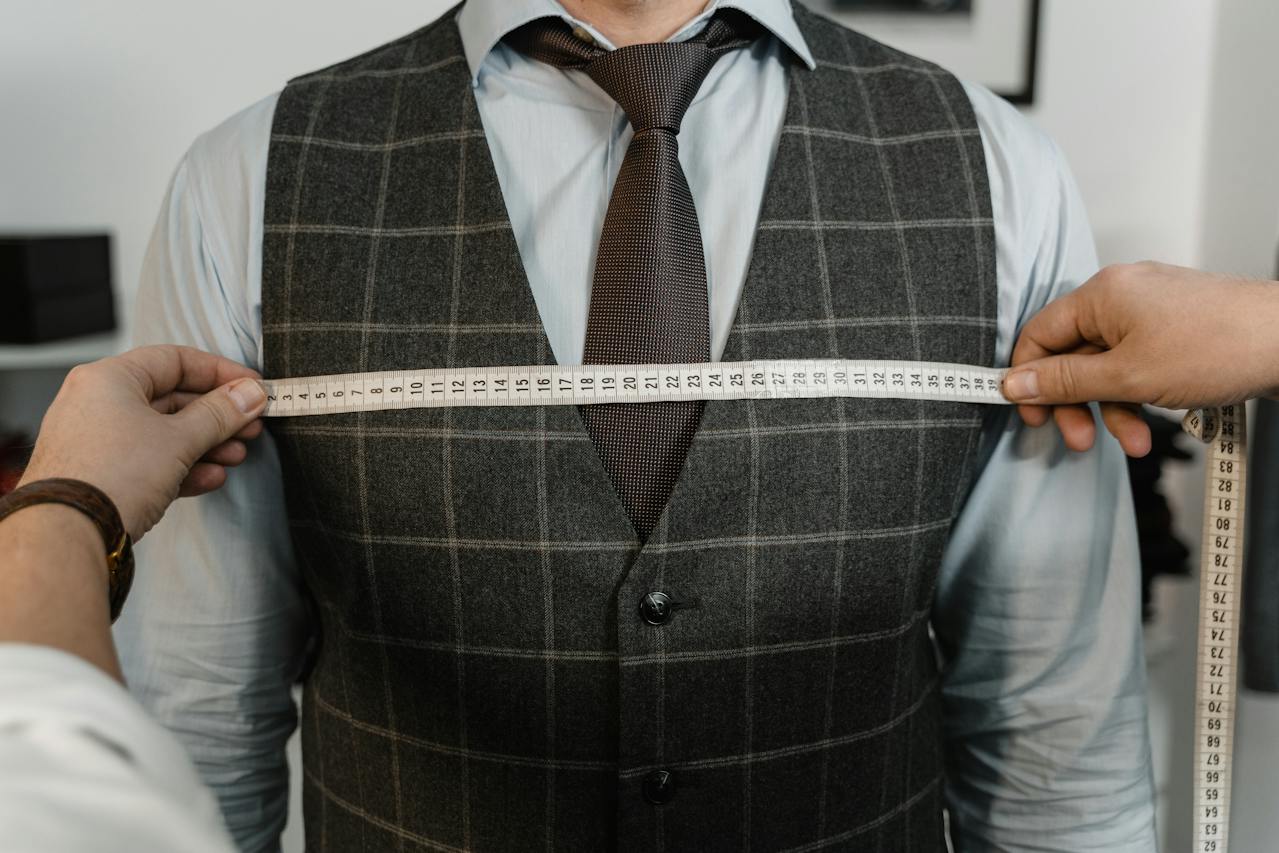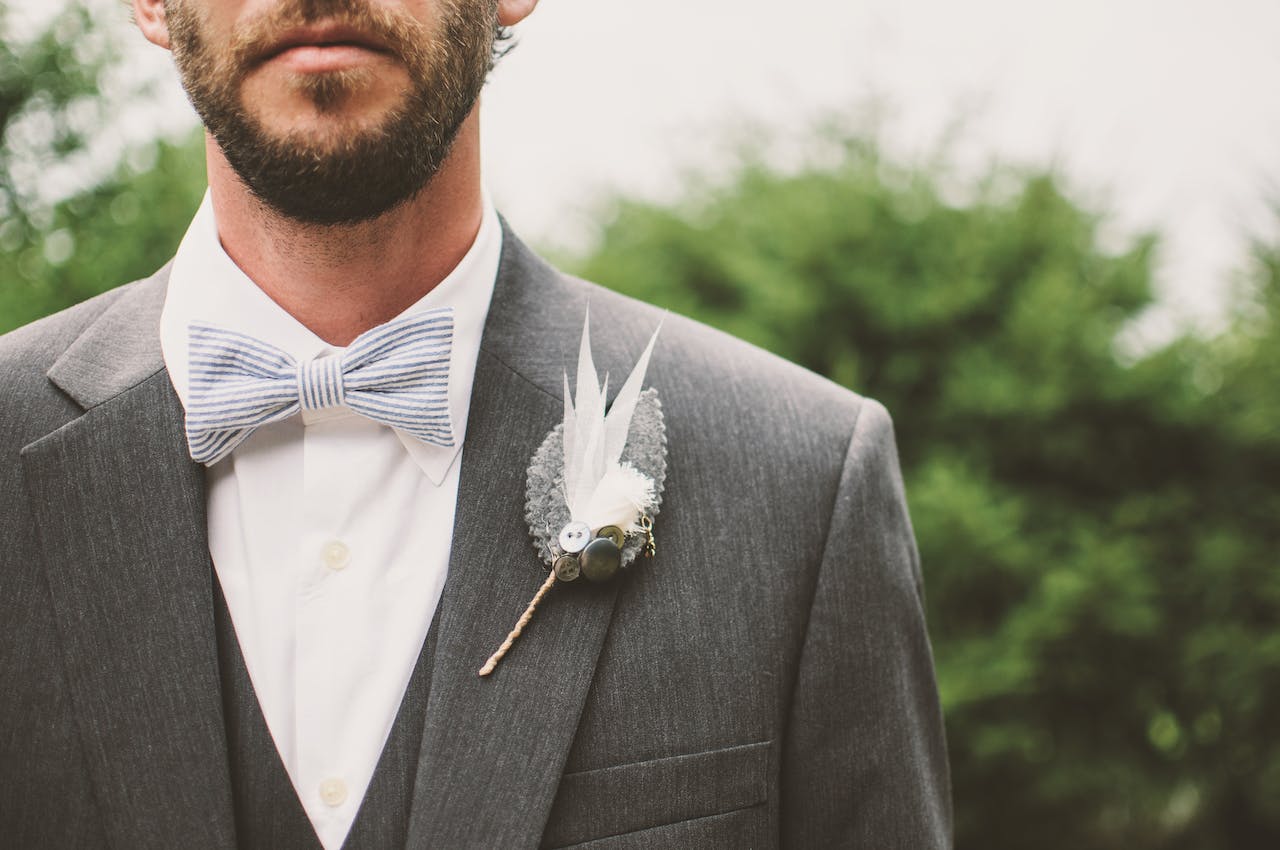A suit vest, often seen as a simple addition to men's formal wear, is actually a powerhouse of style and sophistication. When worn correctly, it can transform an ordinary suit into an ensemble of elegance and distinction. In this ultimate guide, we'll explore the intricacies of wearing a suit vest, ensuring you make the most of this classic piece in your wardrobe. Whether you're dressing for a business meeting or a formal event, understanding how to wear a suit vest can elevate your style significantly.
Waistcoat vs Vest: What’s The Difference?
The terms 'waistcoat' and 'vest' are often used interchangeably in fashion, but they refer to the same garment. Historically, 'waistcoat' is the British term, while 'vest' is the American equivalent. Regardless of the terminology, this garment is a sleeveless upper-body piece that traditionally forms part of a three-piece suit ensemble.
- Historical Context: The waistcoat has been a staple in men's fashion since the 17th century, evolving in style and function over the years.
- Modern Usage: Today, whether you call it a waistcoat or a vest, this piece serves as a symbol of formality and sophistication in men’s fashion. It adds an extra layer of style to a suit, and can even be worn separately for a more casual, yet refined look.
Understanding this distinction and the history behind the garment is key to appreciating its role in men's fashion and how it can be styled for different occasions.
The Two Types of Suit Vests Explained
When it comes to suit vests, there are primarily two styles that you should know about: the single-breasted vest and the double-breasted vest. Each type brings its own flair and level of formality to an ensemble, offering distinct ways to express your personal style.
Single Breasted Vests
The single-breasted vest is the most common and versatile type of vest. Characterized by a single row of buttons down the front, usually ranging from four to six, this style is known for its streamlined and understated elegance.
- Styling Flexibility: Single-breasted vests can be effortlessly dressed up or down, making them suitable for both formal and semi-formal occasions.
- Pairing with Suits: They work exceptionally well with two-piece suits, adding a layer of sophistication without overwhelming the outfit.
- Accessibility: Due to their popularity, single-breasted vests come in a wide variety of fabrics, patterns, and colors, allowing for greater personalization in your wardrobe.
Double Breasted Vests
Double-breasted vests exude a more formal and distinctive look. They feature two parallel rows of buttons and generally have a broader lapel or no lapel at all.
- Statement of Formality: This style is inherently more formal and traditional, often chosen for high-end business settings or formal events.
- Fit and Form: They are best worn well-fitted to the body, accentuating the torso and elevating the overall stature of the wearer.
- Pairing Tips: Double-breasted vests pair exceptionally with their suit jacket counterparts but can also be worn as a stand-alone piece for a bold fashion statement.
Understanding the differences between these two types of vests will help you make an informed decision on which style best suits your occasion, body type, and personal preference.
When to Wear a Suit With a Vest
Understanding when to don a suit with a vest can elevate your style game to new heights. This classic piece of menswear is not just about adding an extra layer; it's about making a statement and enhancing your overall look for the right occasions.
- Formal Occasions: A suit with a vest is quintessentially suited for formal events. Be it a wedding, a gala, or a high-profile business meeting, adding a vest to your suit brings an extra touch of elegance and shows attention to detail. It’s particularly impactful in settings where making a strong impression is key.
- Business Settings: In the corporate world, a suit with a vest can set you apart. It strikes the perfect balance between professional and stylish, especially in industries that value sartorial elegance. For important meetings, presentations, or corporate events, a three-piece suit can convey confidence and sophistication.
- Casual and Semi-Formal Events: While traditionally reserved for formal occasions, the suit vest is also making a mark in casual and semi-formal settings. Paired with a crisp shirt and without the jacket, it offers a smart yet relaxed look, ideal for casual business meetups, dinner dates, or social gatherings.
- Seasonal Considerations: Suit vests are not just for the colder months; they can be a practical addition in warmer weather too. On hot days, you can ditch the jacket but keep the vest for a polished look. In winter, the vest adds an extra layer of warmth without the bulkiness.
Remember, the key to pulling off a suit with a vest is to understand the context of the event and dress accordingly. It’s about matching the level of formality of the occasion while expressing your personal style.
How Your Vest Should Fit
The key to looking sharp in a suit vest lies in its fit. A well-fitted vest can elevate your appearance, ensuring you look polished and sophisticated. Here's a breakdown of what to look for in the perfect vest fit:
Length
The length of your vest is crucial. It should be long enough to cover your waist, ensuring no shirt fabric is visible between the vest and your trousers. The bottom of the vest should align with the waistband of your trousers.
Arms
The armholes of the vest should be high enough to allow free movement but not too tight to cause discomfort. There should be no gaping, and it should sit smoothly against your shirt.
Front
The front of the vest should lie flat against your chest and stomach. It shouldn’t pull or gape open, indicating it's too tight, nor should it hang loosely, which means it's too big.
Back
The back of the vest typically features an adjustable strap to fine-tune the fit. The fabric should sit smoothly without bunching up, providing a clean line down your back.
Shoulders
The shoulders of the vest should sit flat. Just like a suit jacket, if the vest's shoulders extend past your natural shoulder line, it’s too large.
Neck
The neckline of the vest should sit comfortably against your shirt collar. It shouldn’t pull away or cause the shirt collar to bunch up.
Remember, the right fit ensures not just comfort but also plays a significant role in how professional and put-together you appear. A well-fitted vest is a powerful component in a man's wardrobe, capable of transforming a simple suit into an ensemble of distinction.
How to Style a Vest: What to Wear With It
A suit vest offers immense versatility in styling, allowing you to create looks that range from the height of formality to relaxed and casual. Here's how you can style your vest for different occasions and looks:
Bowtie vs Tie vs Nothing
Choosing the right neckwear (or opting for none) can significantly impact your vest's look.
- Bowtie: Adds a touch of classic elegance, perfect for formal occasions.
- Tie: A standard tie gives a traditional and professional look. Consider the width and pattern of the tie to complement the vest.
- Nothing: Going without a tie can create a more casual, approachable style. This works well in less formal business environments or social gatherings.
Shirts
The right shirt is key to complementing your vest.
- Dress Shirts: Pairing with a crisp dress shirt is ideal for formal or business settings.
- Casual Shirts: For a more casual look, consider a well-fitted, casual button-down or even a turtleneck in cooler weather.
Suits and Jackets
The vest should coordinate well with the rest of your suit or jacket.
- Matching Suit: For a traditional three-piece suit, ensure your vest matches your suit in fabric and color.
- Blazers and Sports Jackets: Pairing a vest with a contrasting blazer or sports jacket can create a stylish, layered look.
A Casual Take
Vests can be styled casually too.
- Jeans or Chinos: Pair your vest with jeans or chinos for a smart-casual look.
- Layering: Consider layering the vest over a casual shirt or even a lightweight sweater.
By understanding these styling principles, you can use a vest to create a multitude of looks, each suitable for different occasions and seasons.
Dressing Your Best With a Vest
Embracing the art of wearing a suit vest is more than just a fashion choice; it's a statement of personal style and sophistication at a wedding or any event. Throughout this guide, we've explored the nuances of suit vests, from understanding different types and ensuring the perfect fit to mastering the art of styling them for various occasions. Whether you're dressing for a formal event, a business meeting, or opting for a casual yet refined look, a well-styled vest can significantly elevate your ensemble.
At xSuit, we believe in the power of a suit vest to transform your wardrobe. It's a timeless piece that offers flexibility, elegance, and a touch of personality. By incorporating these tips and tricks into your dressing routine, you can confidently showcase your style, making every appearance memorable.


